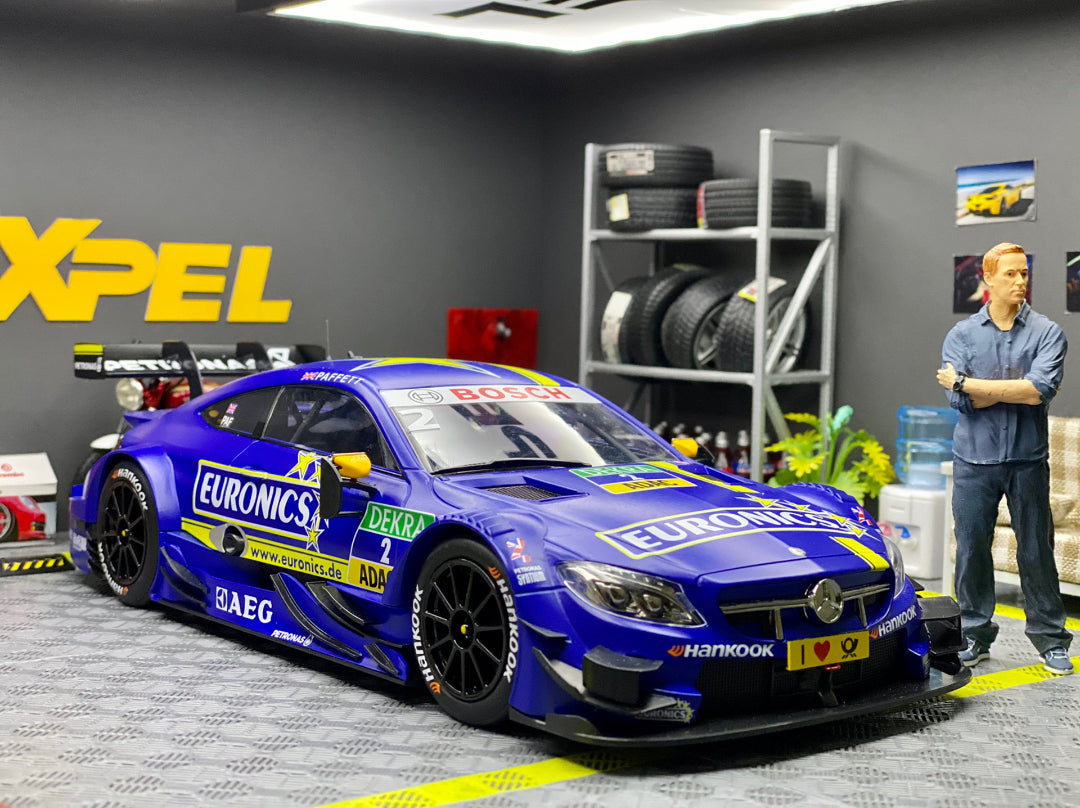
Evaluation of the Craftsmanship of High-End Car Models
Share
Collecting car models is not just a hobby but also a tribute to mechanical aesthetics and exquisite craftsmanship. In the realm of high-end car models, the level of craftsmanship often determines the collectible value. Below, we analyze the features of high-end car model craftsmanship and include an evaluation of different brands.
1. Material Selection and Precision
High-end car models are typically made from premium materials such as metal, ABS plastic, and resin. These materials not only accurately replicate the texture of real cars but also ensure durability and resistance to aging. For example, aluminum alloy can realistically mimic the metallic texture of car bodies, while high-quality resin excels at rendering complex curves.
Brand Analysis:
- AUTOart: Renowned for its precise combination of multiple materials, including metal bodies paired with plastic components, balancing detail and durability.
- CMC: Uses a high proportion of metal materials, especially finely polished aluminum and steel, achieving a premium texture.
-
BBR: Known for its high-quality resin materials, capable of creating intricate body designs.

2. Exterior and Detail Reproduction
High-end models excel in the meticulous reproduction of exteriors and details. Components such as headlights, rims, grilles, and emblems are designed as scaled-down versions of the originals. Some brands even use design blueprints from car manufacturers to ensure precise proportions.
Brand Analysis:
- Kyosho: Praised for its intricate details in rims and headlights, making it a favorite among collectors.
- MR Collection: Focuses on the meticulous detailing of luxury brand models, especially Ferrari and Lamborghini.
- Spark: Specializes in racing car models with detailed decals and fine paintwork.
3. Interior Precision
The interior is a critical factor in evaluating the refinement of car models. Seat textures, instrument panel markings, and layouts of steering wheels and control buttons highlight the craftsmanship. Some high-end models even use materials like genuine leather and flocking to mimic the luxury of real cars.
Brand Analysis:
- Minichamps: Known for its refined interiors in mid- to high-end models, especially in instrument panels and seat textures.
- CMC: Excels in luxurious interior details, incorporating genuine leather and metal accents.
- AUTOart: Offers rich interior details, with highly realistic layouts of steering wheels and dashboards.

4. Movable Parts and Functions
High-end models often feature movable parts, including opening doors, hoods, and trunks, along with functional steering systems. Some brands even incorporate working lights and adjustable suspensions, enhancing playability and visual appeal.
Brand Analysis:
- AUTOart: Most models include movable windows and synchronized steering systems, combining aesthetics with functionality.
- CMC: Known for highly complex mechanical movable parts, including fully functional suspension systems.
- Maisto: Positioned in the mid-range market, offering abundant movable features at a great value.
5. Painting and Polishing
Painting craftsmanship directly impacts the visual appeal of a model. A high-end car model typically undergoes multiple layers of painting and polishing to achieve a mirror-like finish. Additionally, color choices aim to match the original vehicle precisely.
Brand Analysis:
- BBR: Excels in painting techniques, particularly in classic sports cars and limited-edition models.
- MR Collection: Utilizes multi-layer painting processes, resulting in exceptionally fine finishes.
- Kyosho: Offers consistent and even painting, especially impressive in Japanese car models.
Requirements for Collecting Car Models
To become a successful car model collector, one needs the following qualities:
1. Clear Collection Focus
Choose a theme for your collection, such as classic cars, supercars, racing cars, or specific brand series, to establish a systematic collection.
2. Sufficient Budget
High-end car models are often expensive, with some limited editions costing thousands or even tens of thousands. Proper budget planning is essential.
3. Professional Appreciation Skills
Understanding model brands, craftsmanship characteristics, and market trends is fundamental. Research and experience will help you master the standards for evaluating model value.
4. Suitable Storage Environment
Car models require a controlled environment, avoiding high temperatures, humidity, and direct sunlight. A storage space with constant temperature and humidity is recommended.

Creating a Replica Garage: The Ultimate Collector’s Experience
A well-designed replica garage not only enhances the display of car models but also adds fun for collectors. Here are key points for creating one:
1. Design and Layout
Design the display space according to the type and number of models. The garage can mimic real luxury garages with parking spaces, repair areas, and tool rooms.
2. Lighting System
Use adjustable LED lights to create a realistic garage atmosphere. Spotlighting can highlight limited editions or rare models.
3. Scene Building
Add features like miniature driveways, background boards, and small accessories (e.g., oil barrels, toolboxes) to enhance realism.
4. Dust Prevention and Maintenance
Install glass covers or transparent cabinets to protect the models. Regular cleaning and maintenance ensure the models remain in optimal condition over time.
Conclusion
Car model collecting is a unique hobby that blends art appreciation with mechanical aesthetics. By understanding the craftsmanship of high-end models, mastering the necessary skills for collecting, and creating a replica garage, collectors can enhance the value of their collection and enjoy endless fun. Whether it’s the exquisite craftsmanship or the overall display effect, high-end car models are art pieces worth cherishing and savoring.

